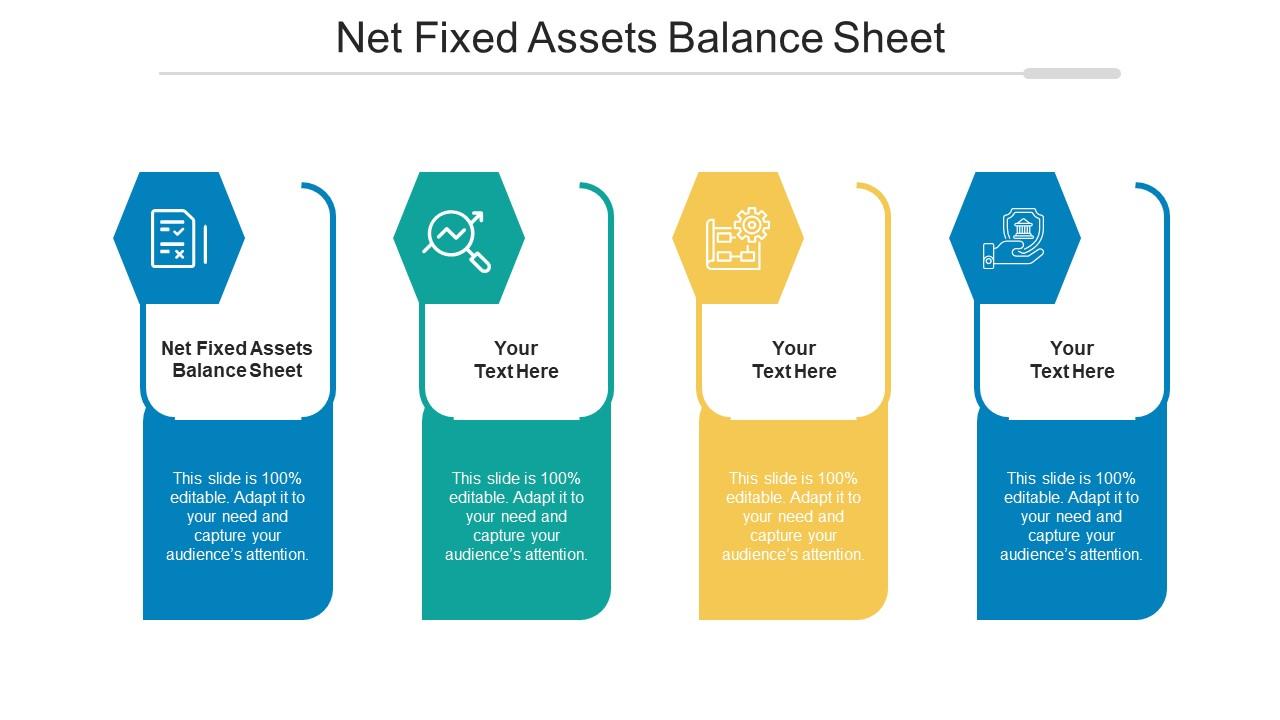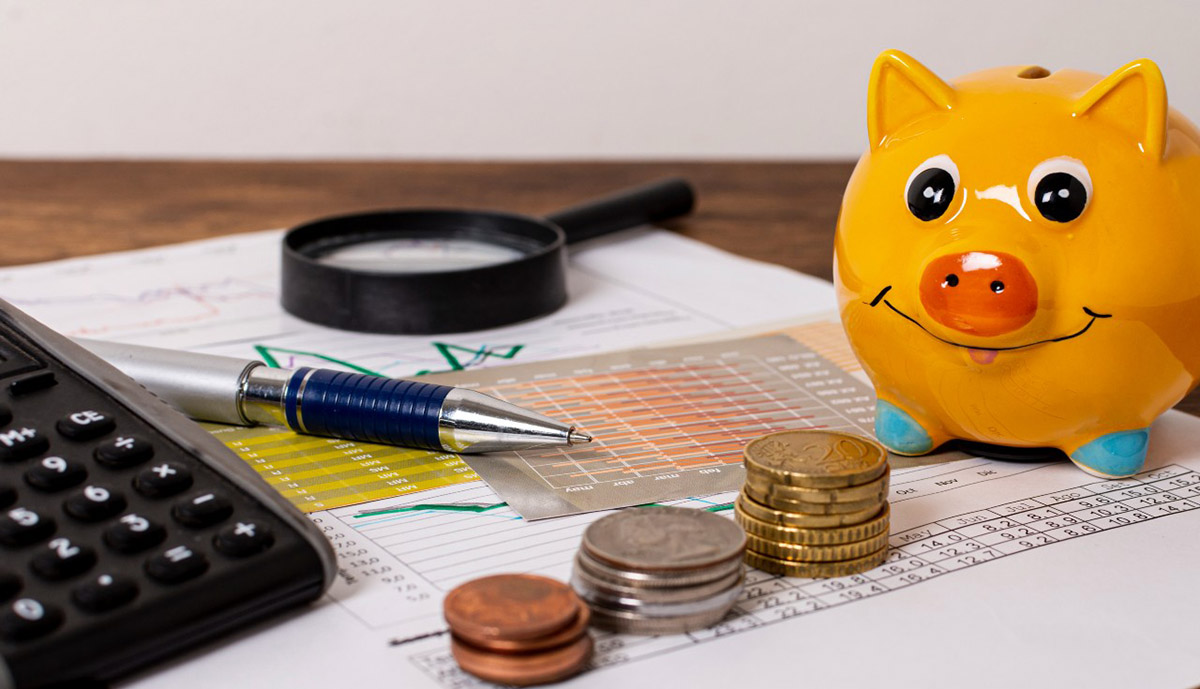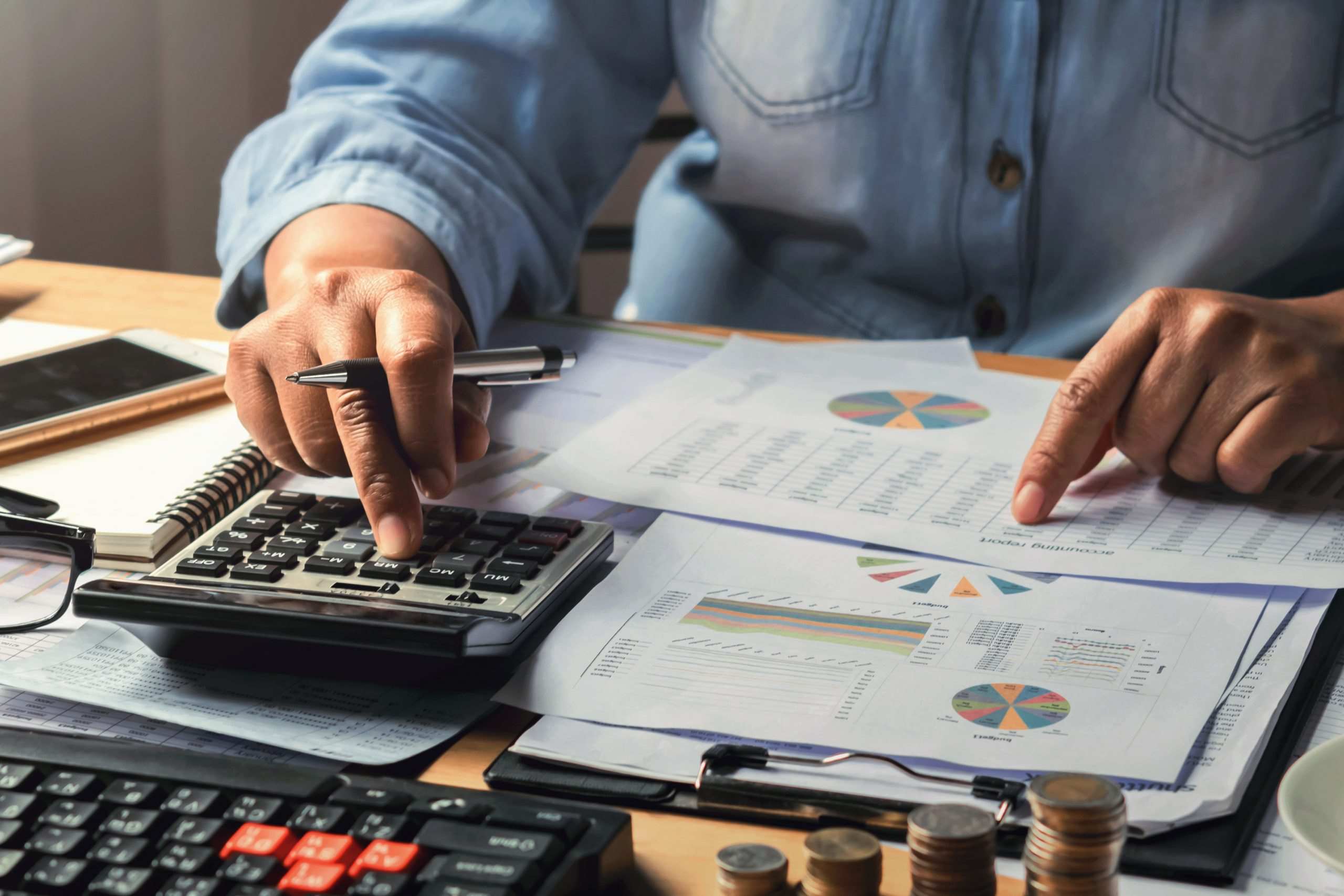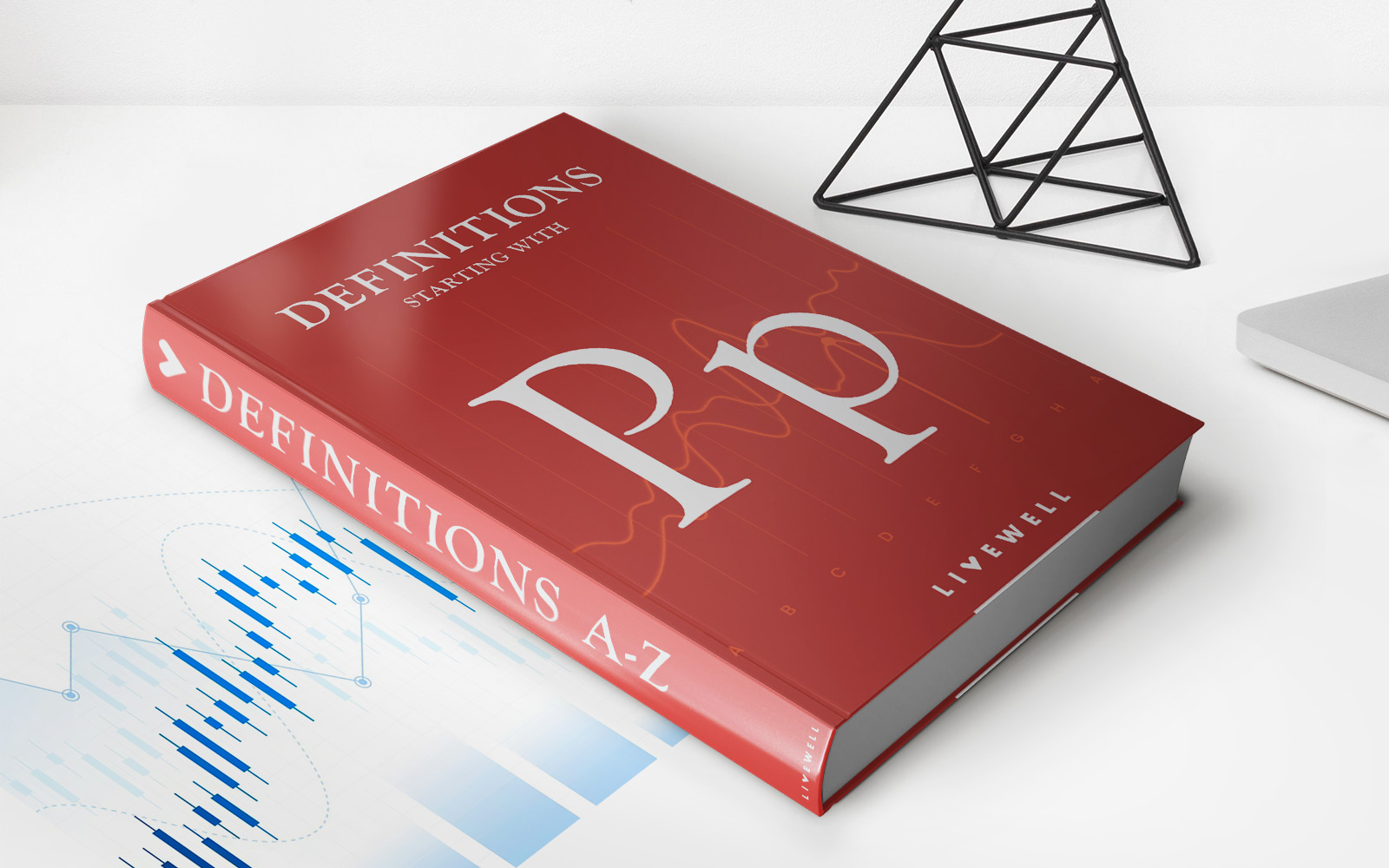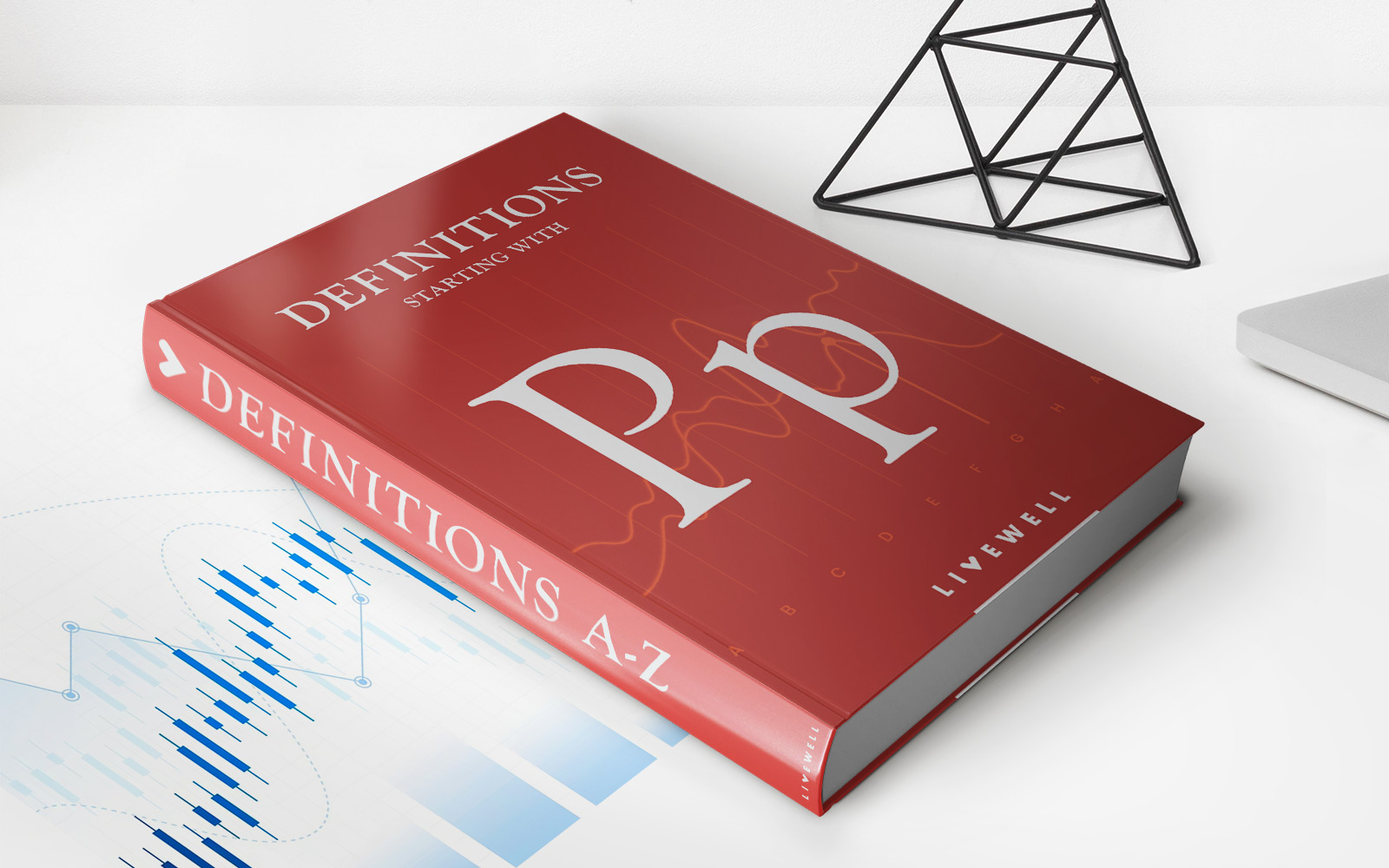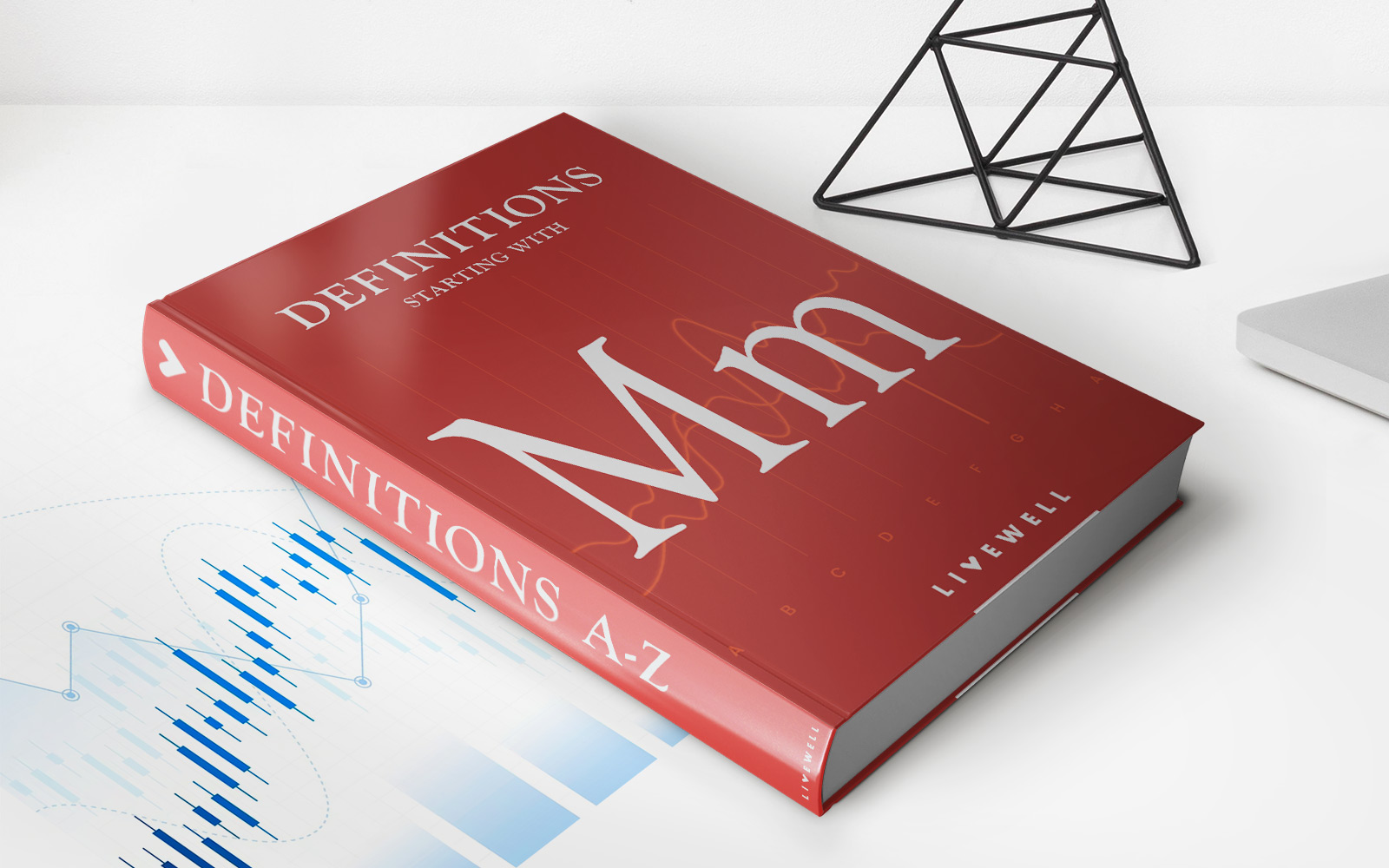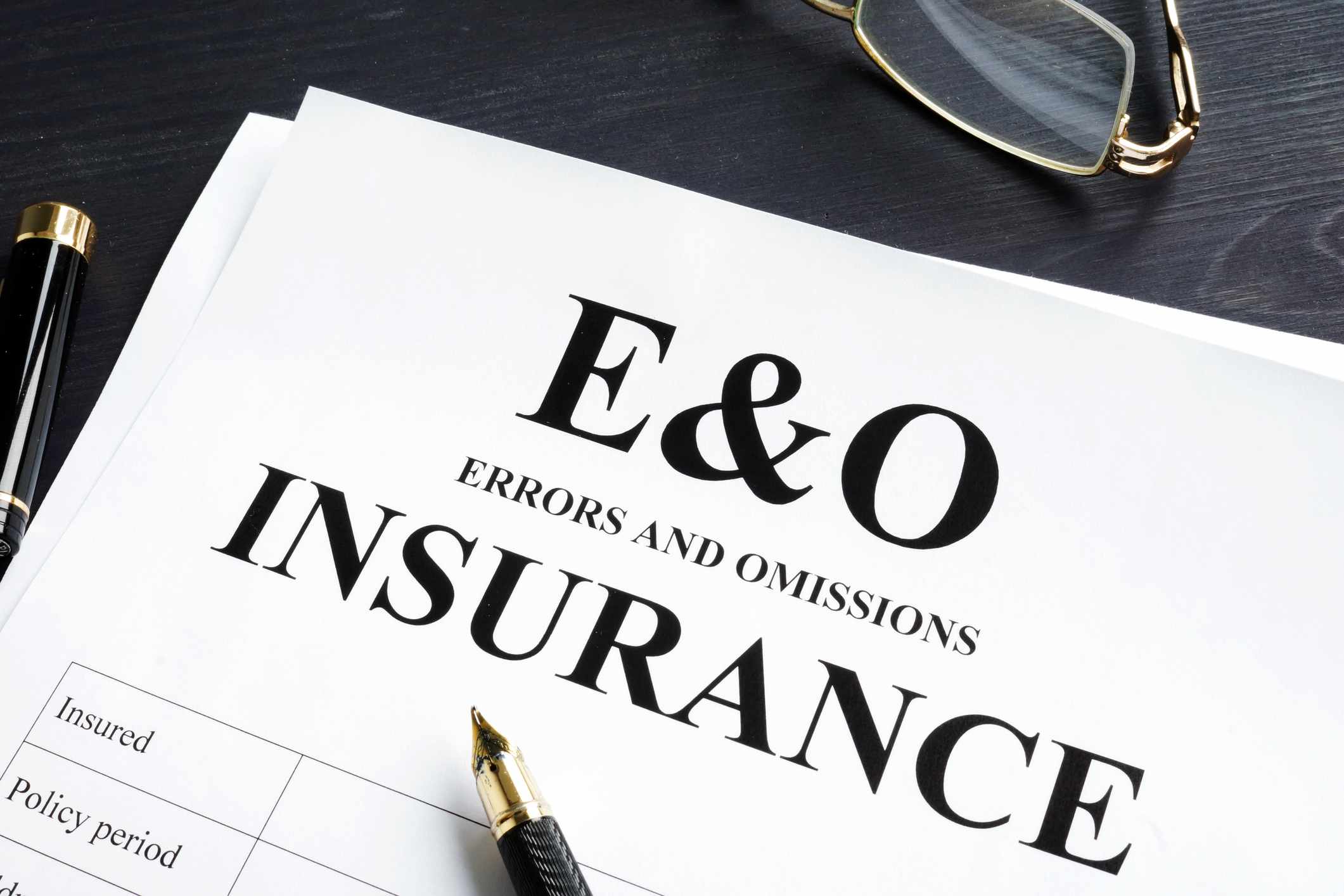

Finance
What Are Plant Assets In Accounting
Published: October 12, 2023
Learn about plant assets in accounting and their significance in finance. Explore how these assets are managed and valued for financial reporting purposes.
(Many of the links in this article redirect to a specific reviewed product. Your purchase of these products through affiliate links helps to generate commission for LiveWell, at no extra cost. Learn more)
Table of Contents
Introduction
When it comes to financial accounting, it is essential to have a clear understanding of plant assets. Plant assets are an integral part of a company’s long-term operations, and their management and accounting play a crucial role in the overall financial health and performance of a business.
Plant assets, also known as fixed assets, are tangible assets that are used in the production process or to generate revenue for a company over an extended period of time. These assets are not meant for resale and are expected to provide economic benefits for several years.
In accounting terms, plant assets are classified as non-current assets on the balance sheet. They are distinguished from current assets, such as cash and inventory, which are expected to be converted into cash within a year or the operating cycle of a business.
Plant assets can vary widely depending on the nature of a company’s operations. They can include land, buildings, machinery, equipment, vehicles, furniture, and fixtures. These assets are considered essential for a company’s operations and contribute to its long-term success.
Proper management and accounting of plant assets are crucial for a company’s financial stability and growth. It involves various aspects, such as the acquisition, recording, depreciation, and disposal of these assets. Additionally, the reporting of plant assets in financial statements is essential for stakeholders, such as investors, creditors, and regulatory bodies, to make informed decisions regarding a company’s financial position.
This article dives deep into the world of plant assets, providing a comprehensive overview of their definition, types, acquisition process, accounting practices, depreciation methods, disposal procedures, and reporting in financial statements. By gaining a thorough understanding of plant assets, businesses can effectively manage and evaluate their long-term investments, thereby maximizing their profitability and sustaining their competitive advantage in the market.
Definition of Plant Assets
Plant assets, also known as fixed assets, are tangible assets that are used in the production process or to generate revenue for a company over a prolonged period of time. These assets are expected to provide economic benefits to the company beyond the current accounting period. Plant assets are considered non-current assets and are categorized as long-term assets on a company’s balance sheet.
Plant assets can take various forms depending on the nature of a company’s operations. Some common examples of plant assets include land, buildings, machinery, equipment, vehicles, furniture, and fixtures. These assets are essential for a company’s day-to-day operations and contribute to its overall productivity and profitability.
One distinguishing feature of plant assets is that they are not meant for resale. Unlike inventory or stock in trade, plant assets are acquired with the intention of using them in the production process or to support the company’s operations. These assets are expected to have a useful life that extends beyond the current accounting period.
Furthermore, plant assets have a significant value and are typically recorded at their historical cost, which includes the purchase price as well as any additional costs incurred to acquire and prepare the asset for its intended use. These costs may include transportation fees, installation costs, legal fees, and any necessary modifications or improvements to the asset.
Plant assets are subject to depreciation, which is the process of allocating the cost of an asset over its useful life. Depreciation helps to reflect the gradual loss of value and obsolescence of these assets as they are used in the production process or over time.
Overall, plant assets are vital resources for a company’s long-term operations. They enable businesses to carry out their core activities efficiently and effectively, contributing to their growth and success in the marketplace.
Types of Plant Assets
Plant assets encompass a wide range of tangible assets that are essential for a company’s operations. Here are the common types of plant assets found in various industries:
- Land: Land is a significant component of plant assets. It includes the cost of acquiring land and any improvements made to it, such as clearing, grading, or landscaping. Land is considered a non-depreciable asset since its value generally appreciates over time.
- Buildings: Buildings include structures used for manufacturing, warehousing, office spaces, or retail operations. They are typically recorded at the cost of acquisition, including the purchase price, construction costs, renovation expenses, and any fees associated with obtaining permits or licenses.
- Machinery and Equipment: Machinery and equipment refer to the tools and machinery used in production processes. This category includes items such as manufacturing equipment, vehicles, computer systems, printers, and specialized tools. These assets are subject to depreciation as they gradually lose value over their useful life.
- Furniture and Fixtures: Furniture and fixtures include items such as desks, chairs, tables, shelves, and display cases used in office spaces, retail stores, or hospitality businesses. These assets are typically recorded at their historical cost and depreciated over their useful life.
- Leasehold Improvements: Leasehold improvements refer to any enhancements made to a leased property to make it suitable for the tenant’s intended use. This can include modifications to walls, flooring, lighting, or plumbing. Leasehold improvements are typically amortized over the term of the lease or the estimated useful life of the improvement, whichever is shorter.
- Intangible Assets: While not physical in nature, some intangible assets can be considered plant assets. These can include patents, copyrights, trademarks, and licenses that are essential for the company’s operations and have a determinable useful life.
It is important for businesses to properly identify and classify their plant assets to ensure accurate financial reporting and effective management of these assets. By categorizing and tracking these assets, companies can evaluate their investment decisions, assess their maintenance needs, and plan for future upgrades or replacements.
Acquisition of Plant Assets
The acquisition of plant assets involves the process of obtaining and preparing assets for their intended use in a company’s operations. It is a crucial step that requires careful planning and consideration. Here are the key elements involved in the acquisition of plant assets:
- Identifying the Need: The first step in acquiring plant assets is identifying the specific assets needed to support the company’s operations. This involves assessing the requirements of the business, such as machinery, equipment, or facilities, and determining the quantity, specifications, and quality required.
- Research and Evaluation: Once the need for plant assets is identified, research and evaluation are conducted to identify potential suppliers, manufacturers, or vendors. This includes gathering information about the quality, price, reputation, warranty, and after-sales service of the assets.
- Cost Analysis: A cost analysis is performed to assess the financial implications of acquiring the plant assets. This involves estimating the total cost of acquisition, including the purchase price, transportation costs, installation expenses, taxes, and any additional costs associated with bringing the assets to their intended location and preparing them for use.
- Negotiation and Purchase: Once the suitable plant assets are identified and their costs are analyzed, negotiations with the suppliers or vendors may take place to finalize the purchase terms. This includes negotiating the price, payment terms, delivery schedule, warranties, and any special conditions related to the assets.
- Delivery and Inspection: After the purchase agreement is finalized, the plant assets are delivered to the company’s location. It is important to thoroughly inspect the assets upon delivery to ensure they meet the specified requirements, are in good condition, and comply with any quality standards or regulations.
- Installation and Preparation: Once the assets pass the inspection, they are installed and prepared for their intended use. This may involve assembling machinery, connecting equipment, setting up electrical or plumbing systems, and ensuring that the assets are ready to be operational.
Effective acquisition of plant assets requires careful planning, thorough research, and attention to detail. Companies must consider factors such as the quality, cost, and reliability of the assets, as well as their compatibility with existing systems or infrastructure. By following a systematic acquisition process, businesses can ensure that they acquire the necessary plant assets to support their operations efficiently and effectively.
Recording Plant Assets in Accounting
Recording plant assets in accounting is crucial for accurate financial reporting and proper management of these assets. The process involves capturing and documenting relevant information about the assets in a company’s books. Here are the key steps involved in recording plant assets:
- Asset Classification: The first step is to classify the plant assets based on their nature and intended use. This helps in organizing the assets and determining the appropriate accounting treatment for each category.
- Asset Valuation: Plant assets are typically recorded at their historical cost, which includes the purchase price as well as any additional costs incurred to acquire and prepare the asset for its intended use. These costs may include transportation fees, installation costs, legal fees, and any necessary modifications or improvements to the asset.
- Asset Account Creation: For each category of plant asset, a separate asset account is created in the company’s general ledger. This allows for tracking and monitoring the transactions related to each asset category.
- Asset Documentation: Proper documentation is essential to support the recording of plant assets. This includes keeping purchase invoices, contracts, receipts, and any other relevant documents that provide evidence of the acquisition and cost of the assets.
- Journal Entries: Recording plant assets typically involves posting journal entries in the accounting system. The journal entry includes debiting the relevant plant asset account with the cost of the asset and crediting the corresponding liability or payment account. This records the increase in assets and the corresponding decrease in cash or accounts payable.
- Depreciation: Plant assets are subject to depreciation, which is the process of allocating the cost of an asset over its useful life. Depreciation expense is recorded annually or periodically, depending on the depreciation method used and is debited to the depreciation expense account and credited to accumulated depreciation. This reflects the gradual loss of value and the wear and tear of the asset over time.
- Revaluation: In some cases, plant assets may need to be revalued due to significant changes in their fair value. This can occur when there is a substantial increase or decrease in the market value of the asset. Any revaluation adjustments are recorded in the books to reflect the updated value of the assets.
By accurately recording plant assets in accounting, businesses can track their investments and assess the value of their assets over time. Additionally, it allows for proper calculation of depreciation expense and provides transparency and accountability in financial reporting.
Depreciation of Plant Assets
Depreciation is a key aspect of accounting for plant assets. It is the systematic allocation of the cost of an asset over its useful life. Depreciation is important for accurately reflecting the wear and tear, obsolescence, and deterioration of plant assets as they are used in a company’s operations. Here are the key points to understand about the depreciation of plant assets:
Depreciation Methods: There are several depreciation methods used to allocate the cost of plant assets:
- Straight-Line Depreciation: This is the most common method, where the cost of the asset is evenly allocated over its useful life. The formula for straight-line depreciation is (Cost of Asset – Residual Value) / Useful Life.
- Declining Balance Method: This method allocates a higher depreciation expense in the earlier years and decreases it as the asset ages. The formula for the declining balance method is (Book Value – Accumulated Depreciation) * Depreciation Rate.
- Units of Production Method: This method allocates depreciation based on the actual usage or production output of the asset. The formula for units of production method is (Cost of Asset – Residual Value) / Total Units of Production * Units Produced.
- Sum-of-the-Years’-Digits Method: This method allocates more depreciation in the early years and less in the later years. The formula for the sum-of-the-years’-digits method is Remaining Useful Life / Sum of Years’ Digits * (Cost of Asset – Residual Value).
Factors Affecting Depreciation: Several factors can impact the depreciation expense of plant assets:
- Useful Life: The estimated useful life of the asset affects the amount of depreciation expense. Assets with longer useful lives will have lower annual depreciation expense compared to assets with shorter useful lives.
- Residual Value: Residual value refers to the estimated value of the asset at the end of its useful life. A higher residual value will result in lower depreciation expense, while a lower residual value will result in higher depreciation expense.
- Maintenance and Upgrades: The level of maintenance and any significant upgrades or improvements made to the asset during its useful life can impact the depreciation expense. If maintenance and upgrades prolong the useful life or enhance the asset’s value, depreciation expense may be adjusted accordingly.
- Impairment: If a plant asset’s value declines significantly and is considered impaired, the company may need to perform impairment tests and adjust the asset’s carrying value. This can impact the depreciation expense going forward.
Financial Reporting: The depreciation expense is recorded in the income statement as an operating expense. The accumulated depreciation is recorded in the balance sheet as a contra-asset account, reducing the carrying value of the plant asset. Both the depreciation expense and accumulated depreciation are disclosed in the notes to the financial statements.
By depreciating plant assets, companies can accurately reflect the decrease in value over time and allocate the cost of these assets to the periods in which they are used. Proper depreciation accounting is essential for financial reporting, decision-making, and accurately assessing a company’s overall profitability and asset values.
Disposal of Plant Assets
Disposal of plant assets refers to the process of removing or selling assets that are no longer useful or productive to a company’s operations. It is important to properly handle the disposal of plant assets to ensure accurate financial reporting and compliance with accounting regulations. Here are the key steps involved in the disposal of plant assets:
- Asset Evaluation: Before disposing of an asset, it is important to assess its current fair value. This involves determining the market value of the asset through appraisals or comparing it with similar assets that have recently been sold.
- Decision-Making: Based on the asset evaluation, the company will need to decide whether to sell, scrap, or donate the asset. The decision is influenced by factors such as the asset’s condition, market demand, disposal costs, potential tax considerations, and the company’s overall strategic objectives.
- Disposal Method: Depending on the decision made, the company will choose the appropriate disposal method. Selling the asset through a private sale, public auction, or online marketplace is a common method. If the asset is no longer valuable or repairable, it may be scrapped or recycled. Alternatively, the company may choose to donate the asset to a charitable organization or transfer it to another department within the company.
- Recording the Disposal: Proper accounting treatment is essential when recording the disposal of plant assets. The asset’s carrying value, accumulated depreciation, and any gains or losses resulting from the disposal should be appropriately accounted for. The book value of the asset is removed from the balance sheet, and any gains or losses are recorded in the income statement. The accumulated depreciation related to the asset is also removed from the balance sheet.
- Disclosure: The disposal of plant assets should be disclosed in the notes to the financial statements. This includes providing details on the method of disposal, the gain or loss recognized, and any significant events or considerations related to the disposal process.
- Tax Considerations: Depending on the jurisdiction and applicable tax laws, there may be tax implications associated with the disposal of plant assets. It is important to consider any tax obligations or benefits when disposing of assets and consult with tax professionals to ensure compliance.
Proper management of the disposal of plant assets ensures transparency in financial reporting and helps maintain accurate records of a company’s asset inventory. It also allows businesses to optimize their asset utilization, free up resources, and make informed decisions regarding replacement or upgrade of assets.
Reporting Plant Assets in Financial Statements
Plant assets play a significant role in a company’s financial statements, providing valuable information about the value and utilization of these assets. Proper reporting of plant assets is essential for stakeholders, including investors, creditors, and regulatory bodies, to understand a company’s financial position and make well-informed decisions. Here’s how plant assets are reported in financial statements:
Balance Sheet: Plant assets are recorded on the balance sheet as non-current assets. Specifically, these assets are typically listed under the category of “Property, Plant, and Equipment” or a similar heading. The carry amount of the asset (cost minus accumulated depreciation) is reported as the asset’s net book value. This information helps stakeholders assess the company’s investment in long-term assets and its ability to generate future economic benefits.
Income Statement: The income statement does not directly reflect plant assets but does capture the depreciation expense associated with the assets. Depreciation expense is reported as a separate line item under operating expenses. This expense represents the portion of the plant assets’ cost that is allocated over their useful lives, reflecting the wear and tear or obsolescence of these assets over time.
Notes to Financial Statements: The notes to the financial statements provide additional details and disclosures related to plant assets. These notes may include information such as the useful lives and depreciation methods used, significant plant asset transactions, and any commitments or contingencies related to these assets. They may also disclose any impairments, revaluations, or changes in accounting policies related to plant assets.
Statement of Cash Flows: Plant asset transactions may also have an impact on the statement of cash flows. Cash outflows related to the acquisition or improvement of plant assets are classified as investing activities. Cash inflows from the sale of plant assets are classified as investing activities, depending on the nature of the business’s operations.
Accurate reporting of plant assets in financial statements is crucial for assessing a company’s financial health, evaluating its asset utilization, and determining its ability to generate future cash flows. It provides transparency and accountability to stakeholders and assists in making informed decisions regarding investments, lending, and overall business operations.
Conclusion
Plant assets are vital components of a company’s long-term operations, representing tangible assets used in the production process or revenue generation. Understanding the management and accounting of these assets is essential for maintaining financial stability, evaluating investments, and making informed decisions. By effectively acquiring, recording, depreciating, and disposing of plant assets, businesses can maximize their operational efficiency, profitability, and competitive advantage.
The acquisition of plant assets involves careful planning, research, and evaluation to ensure the assets meet the company’s needs and provide value for the investment made. Proper recording and classification of plant assets in accounting documents their cost, useful life, and depreciation, showcasing their value in the financial statements. Depreciation captures the gradual loss of value and wear and tear of plant assets, allowing for accurate financial reporting and asset management.
The disposal of plant assets requires consideration of market value, decision-making, and appropriate accounting treatment. Transparent reporting of plant assets in financial statements, including the balance sheet and notes, provides stakeholders with valuable insights into a company’s asset values, utilization, and commitment to the long-term growth and sustainability.
Overall, ensuring the proper management and reporting of plant assets allows businesses to optimize their resource allocation, plan for asset replacements, and exhibit transparency and compliance to regulatory requirements. By maintaining accurate records and understanding the financial implications of plant assets, companies can make strategic decisions to drive growth, maximize profitability, and maintain a strong financial position in today’s competitive business landscape.
